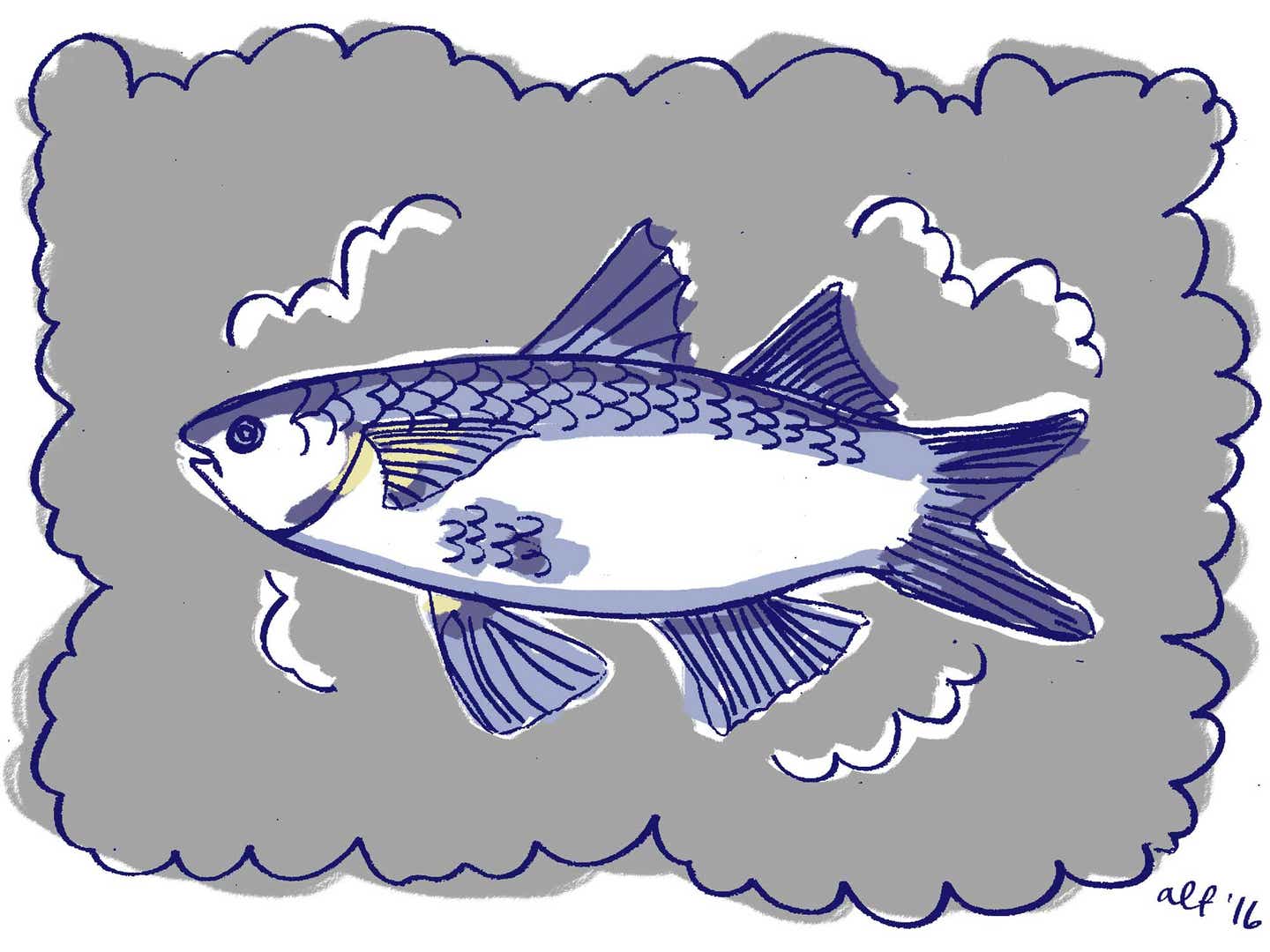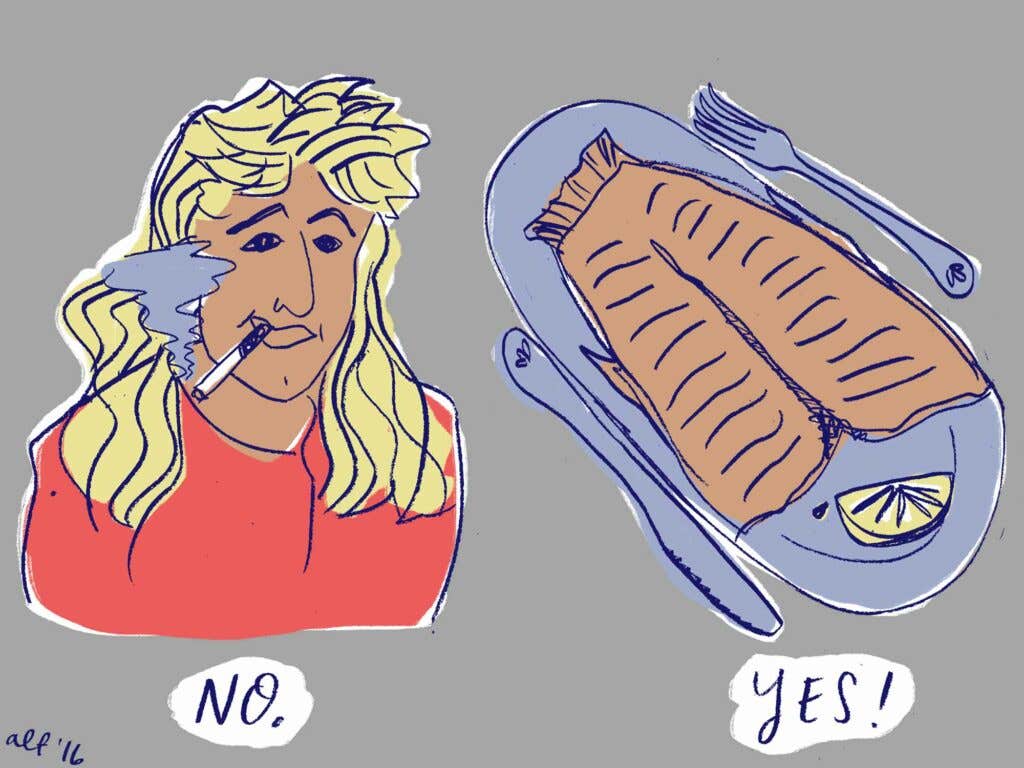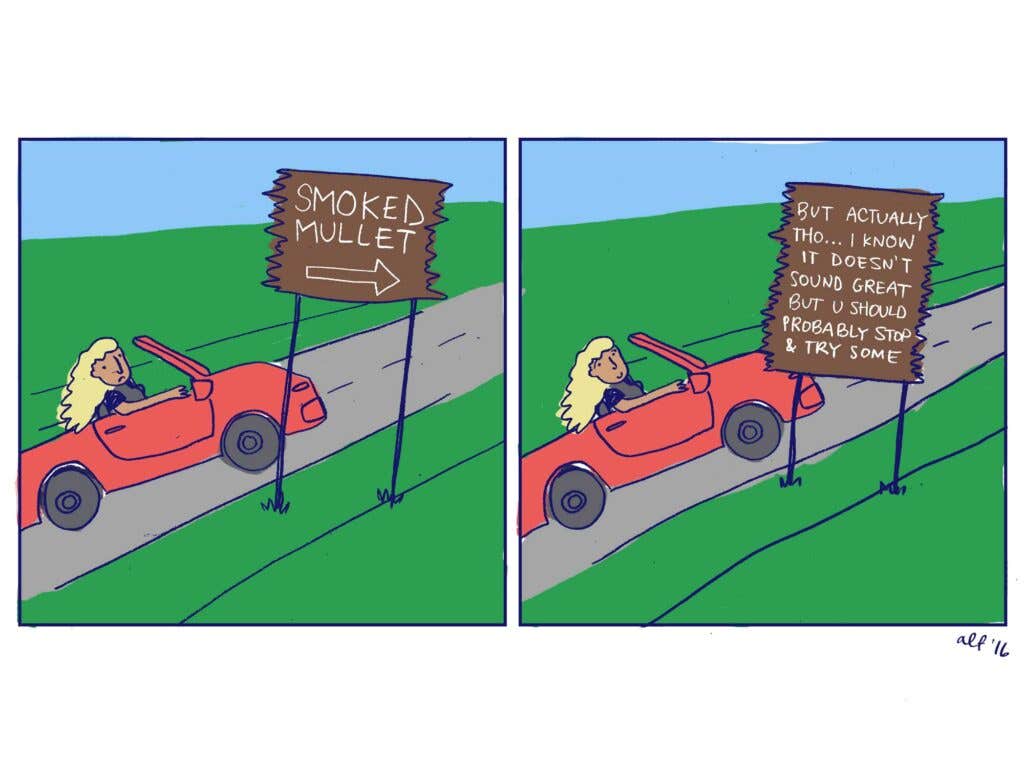
Now’s the Time to Eat Smoked Mullet, a.k.a. Southern Lox
Now an antique tradition even in its home state of Florida, this fall delicacy of gently smoked oily fish is well worth seeking out
These days, vacationers in Florida treat themselves to all manner of seafood: crab cakes, blackened grouper, sweet-battered coconut shrimp. Many popular items, like snow crab legs, aren’t even caught in Florida waters, arriving frozen in cardboard boxes from thousands of miles away.
On the Gulf coast, though, you can still find a genuine made-in-Florida treat that you likely won’t see anywhere else: smoked mullet. Right now, in fact, we are in prime mullet season, which runs from early fall until Christmas. And no, this doesn’t have anything to do with haircuts.
The Smoked Fish of the South
The striped or black mullet is a sleek, silver fish with black markings. Small in size (typically between one and three pounds,) it lives in estuaries and the waters just off the shoreline, where it swims in large schools and leaps energetically from the water.
Marlin and swordfish love to eat mullet, so the latter are often used as a baitfish, but people in Florida love to eat mullet, too. The fish has a high oil content, so it doesn’t stay fresh for very long, but that also makes it perfect for smoking. Properly smoked mullet has a rich, nutty flavor unlike any other seafood.
When prepped for the smoker, a whole mullet is butterflied down the back and folded open, leaving two filets joined at the belly and the backbone running down one side. To eat the finished fish, you lift away the spine and discard it then use the tines of your fork to slip the meat from the bones that remain. It takes a little work, but it’s more than worth the effort.
That smoky flavor is a great foundation for dips and spreads. In a typical recipe, chunks of smoked mullet are blended with cream cheese and sour cream and seasoned with salt, pepper, and a dash of tabasco. Some cooks go for additional ingredients like onion and jalapeno, but there’s no need for excessive adornment. Served with saltine crackers and lemon wedges, smoked mullet dip is simple but delicious.
Unfortunately, few outside the state of Florida have discovered the virtues of this slow-smoked delicacy. Smoked mullet served over grits is a staple in the Gullah/Geechee community on Sapelo Island off the Georgia coast, but that’s about as far north as it goes. Mullet is sometimes sold in South Carolina fish markets, but the locals there tend to toss them in flour and pan-fry them they way they do other small, inexpensive fish like whiting. Most everywhere else, mullet is sold only as bait fish, if it’s even sold at all.
The Modern Mullet Recession

Even in Florida, smoked mullet is about as trendy as the hairdo these days. In the mid 20th century, vast schools of silver torpedo-shaped mullet swept through the waterways in and around St. Petersburg. Fishermen waited atop bridges to snatch them up with bamboo poles rigged with multi-barbed hooks, and they hauled them in using cast nests from the decks of shallow-draft boats. The abundance of mullet—and of fishermen catching them—kept prices low and made it a popular budget fish.
Back then, many Floridians had homemade smokers in their backyard, and they would butterfly the fish, soak them in salt water, and smoke them slowly over Florida hardwoods like hickory, red oak, or buttonwood. In the years after World War II, many of these enterprising fisherman started selling some of their catch to locals and tourists alike along the roadsides.
By the 1980s, though, the mullet populations were dwindling, exacerbated by a spike in demand for mullet roe from Asian markets, which drove prices up and sent armies of fishermen out onto the water. In 1995, the state of Florida banned the use of gill nets, and many of the fishermen who once netted big schools of mullet and smoked a little on the side turned to other lines of work.
Commercial mullet landings are now a quarter what they were before the net ban, and smoked mullet is getting harder to find. In the 1980s there at least 15 restaurants in Sarasota serving smoked mullet; by 2004, writers for Sarasota Magazine could find only one—Walt's Fish Market and Restaurant (which still serves it today).
Consumer tastes have shifted, too, and diners increasingly shy away from darker, oilier fish on the bone in favor of leaner, thicker, lighter-flavored filets. Ted Peters Smoked Fish in St. Petersburg used to sell just two items: smoked mullet and smoked Spanish mackerel, but in recent years they added pricier salmon and mahi-mahi.
A True Local Delicacy

But visitors to Florida shouldn’t shy away from smoked mullet just because it’s unfamiliar. In fact, that’s precisely the reason that mullet matters so much today.
You can get New Orleans-style gumbo in Boston and Baltimore-style crab cakes in San Diego, but smoked mullet is one of those rare regional delicacies that can still be found almost exclusively where it originated. It’s also a splendid example of how a little-prized fish can be transformed into something delicious and wonderful through nothing more than smoke and time.
More than anything, smoked mullet offers a small taste of the fading world of old Florida—that brief period between the end of WWII and the opening of Disney World in 1971 when the automobile and post-war prosperity transformed the landscape of a once-rural state. Long before the corporate glitz of movie-themed amusement parks and chain restaurants, mullet shacks vied with alligator farms and fresh citrus stands for the dollars of families heading south for a week in the sun.
Back then, vacationers filled their car trunks with boxes of oranges or grapefruits to bring home as presents for family and friends, something no one would think of doing today. Perhaps instead we should load down our coolers or carry-on bags with dry ice and a couple of pounds of whole smoked mullet. It’s too wonderful of an American regional food tradition to let slip away.
Where to Find Smoked Mullet Today
Ted Peters Smoked Fish
In 1951, Ted Peters opened a small restaurant selling smoked mullet, German potato salad, and cold draft beer to the tourists heading out Pasadena Avenue to St. Petersburg Beach. They're still at it today.
1350 Pasadena Avenue South, St. Petersburg
Walt's Fish Market
Walt's is a full service fish market with a large selection of local fish and shellfish, which they cook and serve in the adjoining restaurant and tiki bar. Each guest is greeted with a complimentary cup of smoked mullet dip with saltines to get them started.
4144 South Tamiami Trail, Sarasota
The Mullet Shack
On Saturday afternoons in Apollo Beach, a food trailer called the Mullet Shack opens for business, selling smoked mullet, fried mullet, mullet spread, and whole fresh mullet for customers who want to cook it themselves. In a throwback to the old tradition of roadside mullet stands, Steve Fagen and his son, Stephen, Jr., catch their fish in Tampa Bay on Fridays and smoke them Saturday morning so they're ready for the lunchtime crowd.
Currently setting up at Green Nursery, 7075 North Highway 41, Apollo Beach
Skipper's Smokehouse
Since 1980, Skipper's Smokehouse has evolved from a small take-out smokehouse to a combination oyster bar and live music venue occupying a collection of ramshackle wooden buildings. You can enjoy a smoked mullet dinner indoors at the old wooden bar or outdoors on a picnic table beneath century-old live oaks.
910 Skipper Road, Tampa
Star Fish Company Dockside Restaurant
A wholesale and retail seafood market dating back to this 1920s, the Star Fish Company added a restaurant two decades ago where patrons can dine dockside on picnic tables overlooking the water. White cardboard boxes are filled with french fries and hushpuppies and the fish of your choice, including smoked mullet.
12306 46th Avenue West, Cortez
Keep Reading
Continue to Next Story










